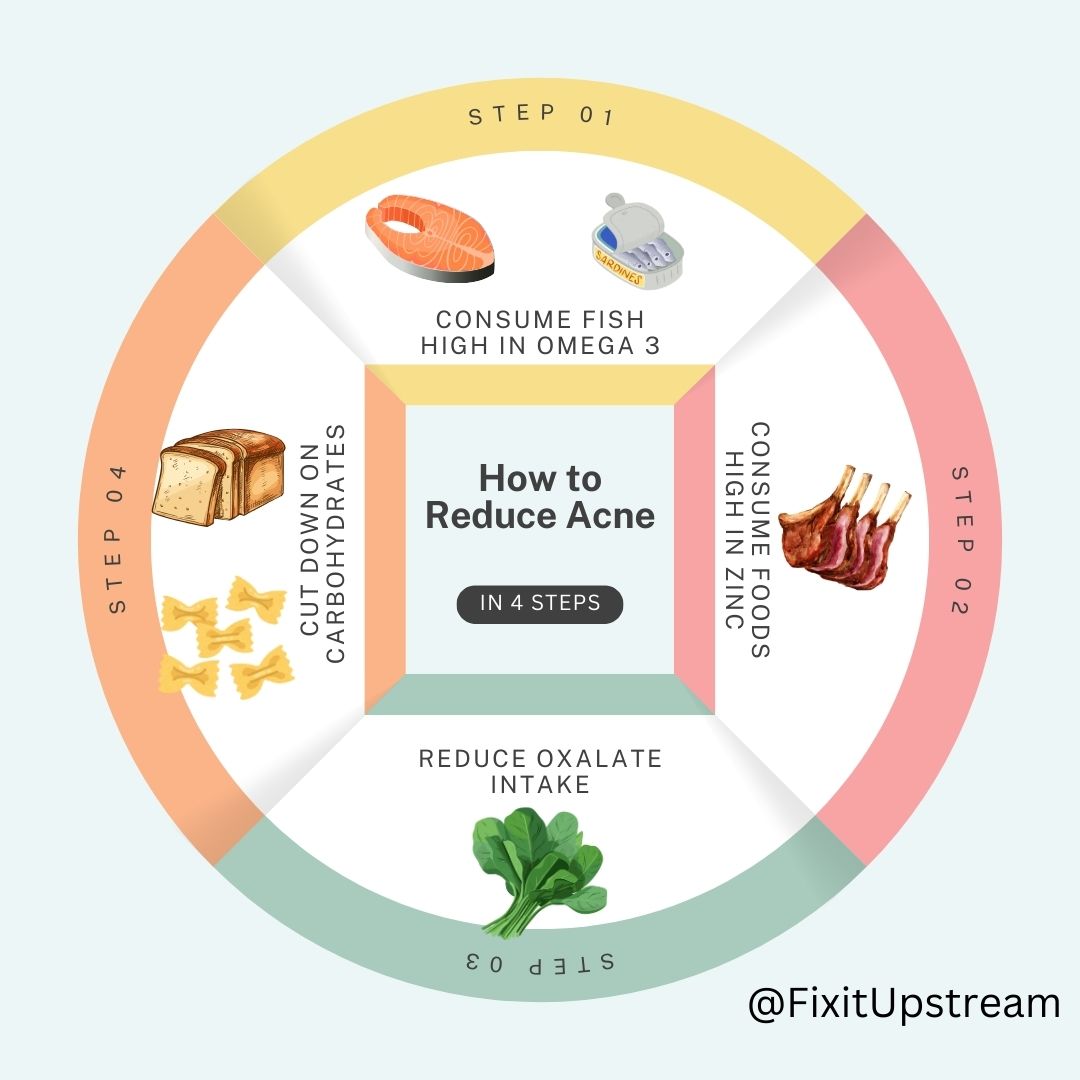
As a teen dealing with acne myself, I’ve tried everything from expensive creams to weird DIY masks. But what if the secret to clearer skin was in our kitchen? 🤔
After diving deep into nutrition research, I discovered these science-backed food tricks that are actually helping my skin:
Step 1: Consume Fish High in Omega-3 Fatty Acids
Omega-3 fatty acids, found in fish like salmon, mackerel, and sardines, are known for their anti-inflammatory properties. Acne is often linked to inflammation, and studies have shown that omega-3s can help reduce the severity of acne lesions by calming inflammatory responses in the skin. Additionally, omega-3s may regulate hormones that trigger acne production26.
Other Omega-3 Sources:
Walnuts
Chia seeds
Flaxseeds
Incorporating these foods into your diet can provide a natural and effective way to combat acne.
Step 2: Consume Foods High in Zinc
Zinc is a mineral essential for skin health. It regulates oil production, reduces inflammation, and supports cell repair. Research suggests that zinc deficiency can worsen acne by increasing sebum production and clogging pores37.
Zinc-Rich Foods to Add to Your Diet:
Oysters
Lamb
Mushrooms
Beef
Pork
Including these foods can help balance oil levels and promote clearer skin.
Step 3: Reduce Oxalate Intake
Oxalates are compounds found in certain plant-based foods that may contribute to acne by forming calcium-oxalate crystals in the pores, leading to inflammation. Reducing high-oxalate foods like spinach, almonds, and sweet potatoes may help alleviate acne symptoms.
Tips to Manage Oxalates:
Drink plenty of water to flush out oxalates through urine.
Balance high-oxalate foods with calcium-rich options to reduce absorption.
Step 4: Cut Down on Carbohydrates
High-glycemic-index (GI) carbohydrates, such as white bread, pasta, and sugary snacks, can spike insulin levels, which may exacerbate acne by increasing sebum production and hormonal imbalances. Studies have shown that switching to low-GI carbohydrates can improve acne severity over time5.
Low-GI Alternatives:
Legumes (lentils, beans)
Non-starchy vegetables (broccoli, cauliflower)
Reducing refined carbs while focusing on whole-food options can stabilize blood sugar levels and support healthier skin.
Final Thoughts
While these four dietary adjustments—adding omega-3s and zinc-rich foods, reducing oxalates, and cutting down on high-GI carbs—can significantly improve your skin health, consistency is key. Pair these changes with proper hydration and a skincare routine tailored to your needs for the best results. Remember that everyone’s skin responds differently, so patience is essential as you work toward clearer skin.

